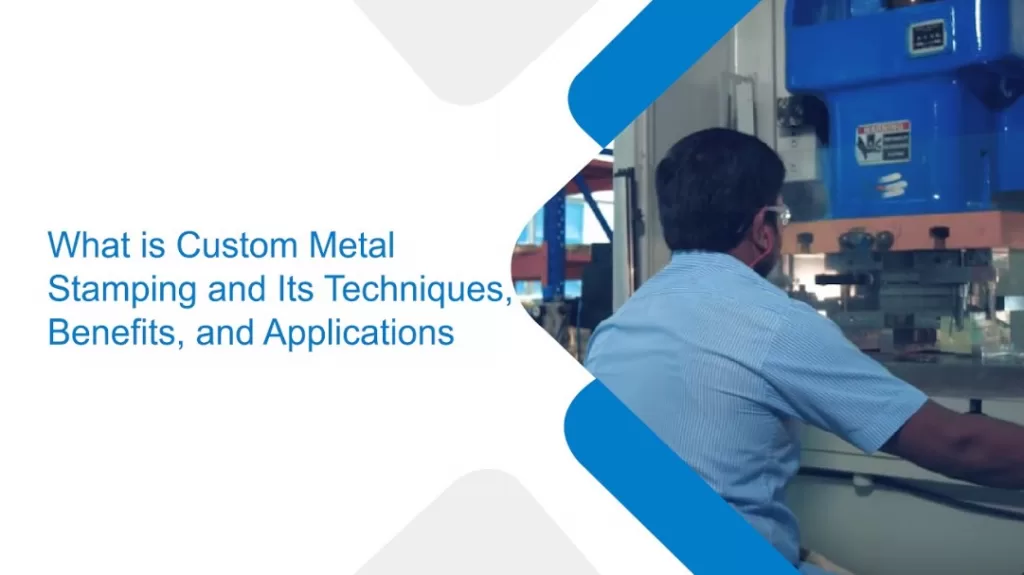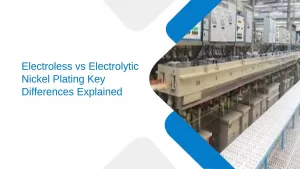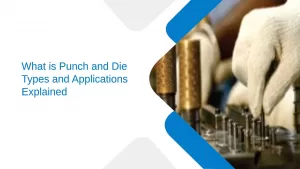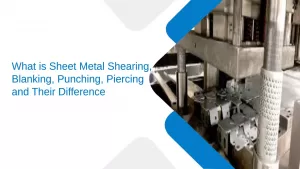What is Custom Metal Stamping and Its Techniques, Benefits, and Applications?
- Metal Stamping |
- Jun 25, 2025

When it comes to manufacturing, getting things just right and doing it quickly often go hand in hand. One process that nails both is custom metal stamping. Whether you need detailed parts for electronics, car components, or even personalized metal items, this technique is key to making it happen.
But what exactly is custom metal stamping? How does it work? And why is it such a popular choice across industries? This blog breaks down everything you need to know about custom metal stamping, its techniques, benefits, and applications.
What is Custom Metal Stamping?
Custom metal stamping is basically a way to shape metal sheets or coils into exactly what you need. Instead of using a one-size-fits-all approach, this method is all about crafting parts that fit unique designs perfectly. It’s like tailoring a suit, but for metal.
The magic happens with special tools called dies and stamps, which are made just for the specific piece you want. When these tools press down on the metal, they transform it into precise shapes over and over again, so every part is spot-on and detailed.
Standard Techniques in Custom Metal Stamping
Custom metal stamping isn’t a one-size-fits-all process. Different techniques can be used depending on the design and materials chosen.
- Blanking: Cutting flat shapes from the metal sheet. This is usually the first step in metal stamping.
- Piercing: Creating holes or cut-outs in the metal.
- Forming: Bending or shaping the metal without removing material.
- Embossing: Raising or recessing designs on the metal surface for decorative or functional purposes.
- Coining: Applying high pressure to create detailed features or patterns.
- Progressive Stamping: This means doing several stamping steps one after the other to make detailed, complicated parts quickly and smoothly.
- Fine Blanking: Producing components with smooth edges and precise tolerances, typically employed in precision industries.
Each of these techniques can be combined or adjusted to achieve the desired shape, size, and finish of a custom metal-stamped part.
Benefits of Custom Metal Stamping
Why do manufacturers choose custom metal stamping over other fabrication methods? Here are some key advantages:
- Consistent Quality: Custom stamping makes sure every piece matches the design perfectly, with very little difference between them.
- Affordable at Scale: After setting up the custom tools, you can produce large quantities quickly without breaking the bank on each part.
- Less Waste: This process uses metal efficiently, so there’s less scrap compared to other manufacturing methods.
- Fast Turnaround: Stamping works quickly, which means you can get both prototypes and big batches ready in no time.
- Works with Many Metals: Whether it’s steel, aluminium, copper, or brass, stamping handles them all with ease.
- Strong and Reliable: The stamping process actually makes metal parts tougher thanks to the way the metal is shaped and hardened.
- Tailored to You: It lets companies create one-of-a-kind metal pieces that really stand out in the crowd.
Applications of Custom Metal Stamping
Custom metal stamping is a flexible process utilised across various industries. Below are some typical applications:
- Automotive Industry: We manufacture brackets, clips, gears, and other components that require both strength and precision.
- Electronics: Producing small, detailed parts such as connectors, shields, and terminals.
- Aerospace: Creating lightweight yet durable parts essential for aircraft performance.
- Consumer Goods: Making decorative or functional metal pieces for appliances, tools, and household products.
- Medical Devices: We specialise in crafting precision components for surgical instruments and diagnostic equipment.
- Construction: Fabricating fasteners, connectors, and fittings used in building infrastructure.
- Custom Branding: Personalised metal stamps used for logos, serial numbers, and product identification.
This broad range of applications highlights the flexibility and importance of custom metal stamping in modern manufacturing.
Choosing the Right Custom Metal Stamping Partner
To maximise the benefits of custom metal stamping, collaborating with an experienced manufacturing partner is crucial. The right company will offer:
- Advanced Design Support: Helping translate your ideas into effective tooling and production methods.
- Quality Assurance: Strict testing and inspection ensure that every stamped part meets the standards.
- Material Expertise: Guidance on selecting the best metal type and thickness for your application.
- Scalable Production: Capability to handle everything from prototypes to mass production.
- Innovative Techniques: Use of progressive stamping, fine blanking, and other advanced processes to optimise outcomes.
A reliable partner can not only deliver high-quality parts but also improve your overall production efficiency and reduce costs.
Final Thoughts
Custom metal stamping isn’t just a step in making metal parts; it’s a smart way to get things done right, fast, and exactly how you want. Whether you need small personalised stamps or lots of complex parts, this process makes sure each one turns out great every time.
As businesses keep changing and asking for more custom stuff, metal stamping will stay a reliable way to make it happen. With the right know-how and gear, it can open up a bunch of new possibilities for your business.
FAQs
Q1. What is custom metal stamping used for?
Custom metal stamping is used to shape metal parts tailored to specific designs, commonly applied in automotive, electronics, aerospace, and medical industries.
Q2. How is progressive stamping different from regular stamping?
Progressive stamping performs multiple operations in sequence within one die setup, improving speed, precision, and consistency in producing complex parts.
Q3. Is custom metal stamping suitable for small-scale production?
Yes, while it’s highly cost-efficient for large volumes, modern stamping partners also support low-volume runs and prototyping with flexible tooling.
Q4. What metals can be used in custom metal stamping?
Common materials include stainless steel, copper, brass, aluminium, and carbon steel—chosen based on strength, conductivity, and design requirements.
Q5. How do I choose the right stamping partner for my project?
Look for providers with advanced design support, tooling expertise, scalable production capabilities, and a track record in your industry for optimal results.




